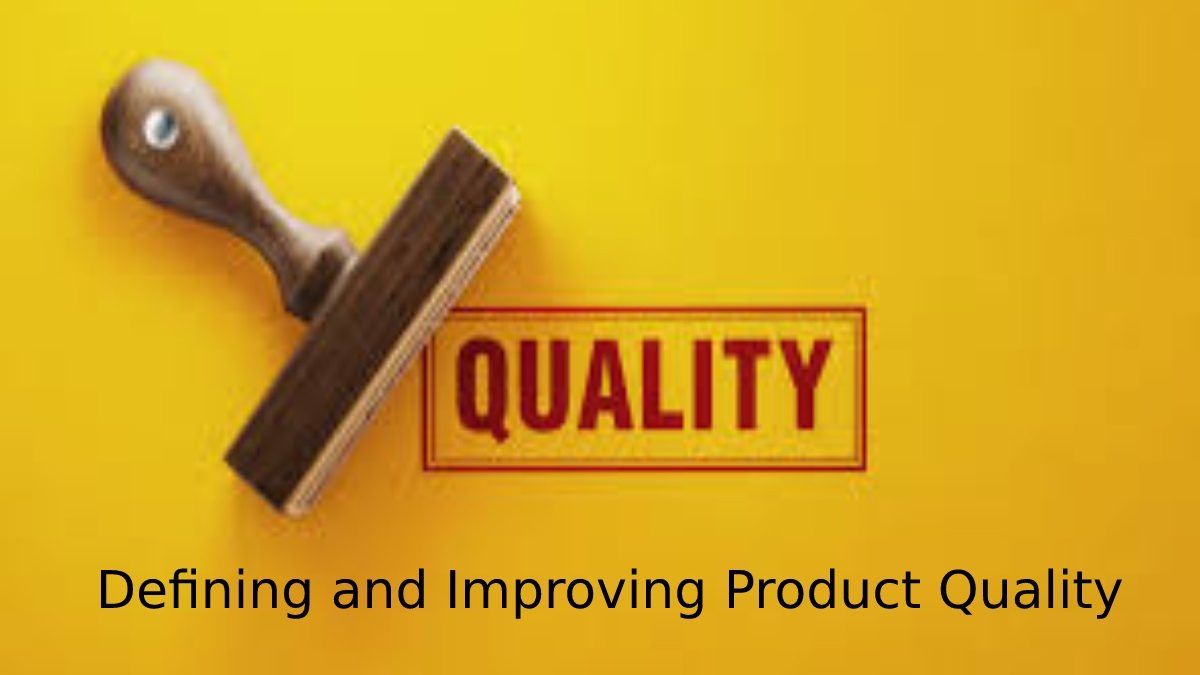Based on the observations, definitions and explanations of world-renowned Product quality experts, we can divide the purpose of quality into two categories.
On the one hand, quality is about the meeting was given specifications also, it manufacturers providers achieve quality by producing products whose properties meet several numerically defined specifications according to this definition.
It associate quality with the satisfaction of your customers. To achieve customer satisfaction, the quality of a product is determined by meeting customer expectations regarding consumption and use. Therefore, companies are better off focusing on combining these two definitions. It ensures that your products meet the requirements and at the same time satisfy customer needs.
Table of Contents
Create A Compact Product Strategy
To place out in a sea of uncountable original products, you need to create a brilliant product strategy. Designing a product from scratch is difficult, but only if you run out of ideas. And since there are already many solutions, you need to create something unique. Get inspired by talking to your users and prospects.
Once you know what your prospects need, it’s essential to develop a high-level product vision. It allows you and your team to take a more strategic approach to product development.
After setting your goals, you need to translate them into precise details to order your product roadmap. When you have a strong strategy and a logical product roadmap, you can compare it to your initial product vision. After reviewing your idea, adjust the product roadmap and do so regularly.
Implement A Quality Management System (QMS)
While conceptualizing, imagining, and creating a product roadmap is essential, these steps alone do not determine the quality of the off-the-shelf product. For example, a superiority management system (QMS) such as ISO 9001 is a tradition of internal rules that govern how a company creates and delivers its products or services.
By meeting the standard, you improve your company’s credibility and image, but more importantly, you improve customer satisfaction. One of the ISO 9001 standard requirements is to constantly enhance customer satisfaction by meeting customer needs. Along with other QMS requirements like better process integration or better decision-making evidence, this will push you and your teammates only to seek quality.
Integrate Quality Into Your Ccorporate Culture
Implementing a QMS is essential but not enough to appear compliant. Should firmly embed these quality principles throughout your organization. The whole team has to approve on what constitutes a quality product.
For some, it’s a low-cost product, while for others, it’s a state-of-the-art solution. Regardless of what you agree, ask your bosses to reinforce the idea constantly. It ensures that everyone shares your quality vision.
By complying the standard, you improve credibility and image of the company, but above all, you improve the level of satisfaction of your customers. Therefore, one of the necessities of ISO 9001 is to enhance customer satisfaction by meeting customer needs constantly. Furthermore, it, along with other quality management system requirements, such as better process integration or better decision-making evidence, will condition you and your teammates to look only for quality.
Make Quality An Integral Part of Your Corporate Culture
It is an inexpensive product for some, while for others, it is a state-of-the-art solution. Regardless of what you agree with, ask your managers to reinforce the idea constantly. It is how you will get everyone to buy into your quality vision.
To create products to your quality specifications, management must allow employees to participate in the development process. If an employee senses that he has no say in a project, he will most likely ignore the need to give you his opinion. And it would help if you had this feedback as your connecting employees are direct to production. So let employees talk freely about product roadmap deviations or quality requirements.
You must give your employees precisely the correct quantity of guidance during product growth. If you micromanage them much, they will lose their creative ability. If you are too flexible, they will not be clear about their authority to make independent decisions. Let your employees observe business processes and hold meetings where they suggest improvements.
Carry Out Product And Market Tests.
It is essential to analyze and test your product before launching it. You may need to fix bugs, add features, and adjust functionality so that the product meets the needs and requirements of the consumer. You will need to test the product over beta testing and test consumer reaction through market testing.
Beta testing will allow you to deliver on the promised user experience and ensure that all product components. It including quality, work as initially intended.
Product testing will also let you see how your product performs in the real world compared to how it performs in a controlled environment. In addition, it will test your product’s usability, support, and marketing so you can measure customer validation and improve product quality accordingly.
Market research will help you unders and demand and acceptance for your product, allowing you to be more accurate during a comprehensive product launch. By conducting market tests, you will optimize the distribution, production and support systems for your product. In addition, you will be able to mitigate investment risks and make changes to the marketing of the product and the product itself.
Also Read:- the 6 types of promotions

